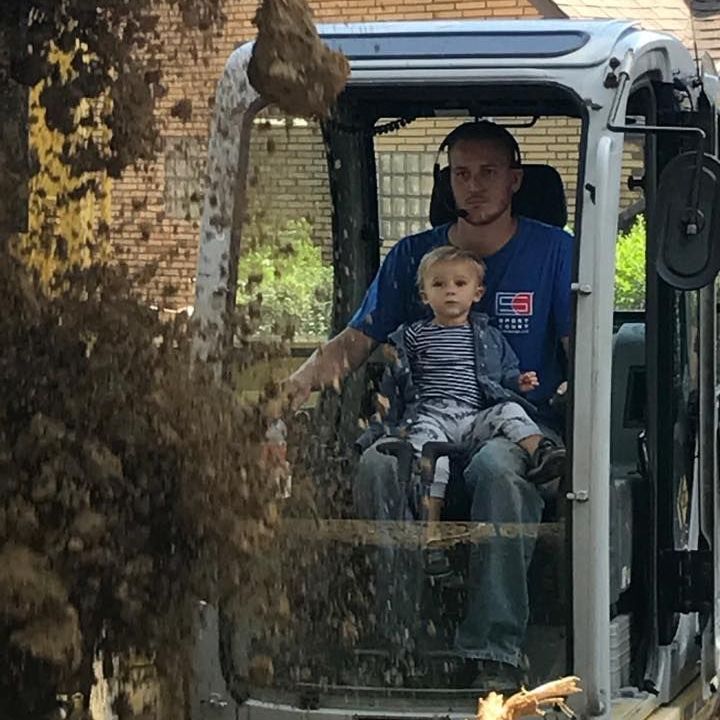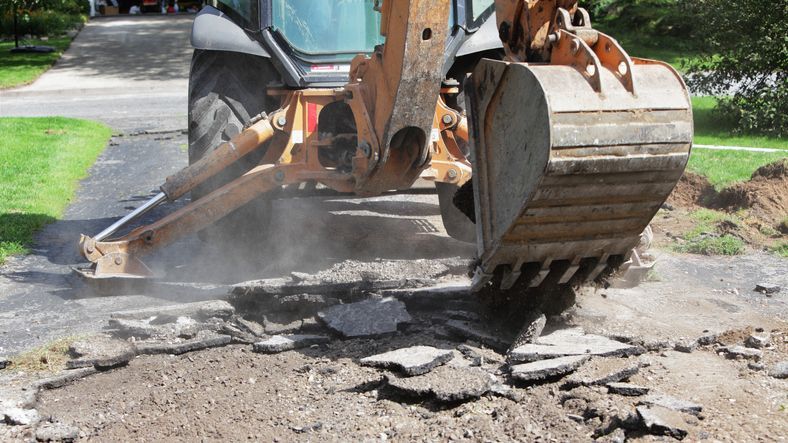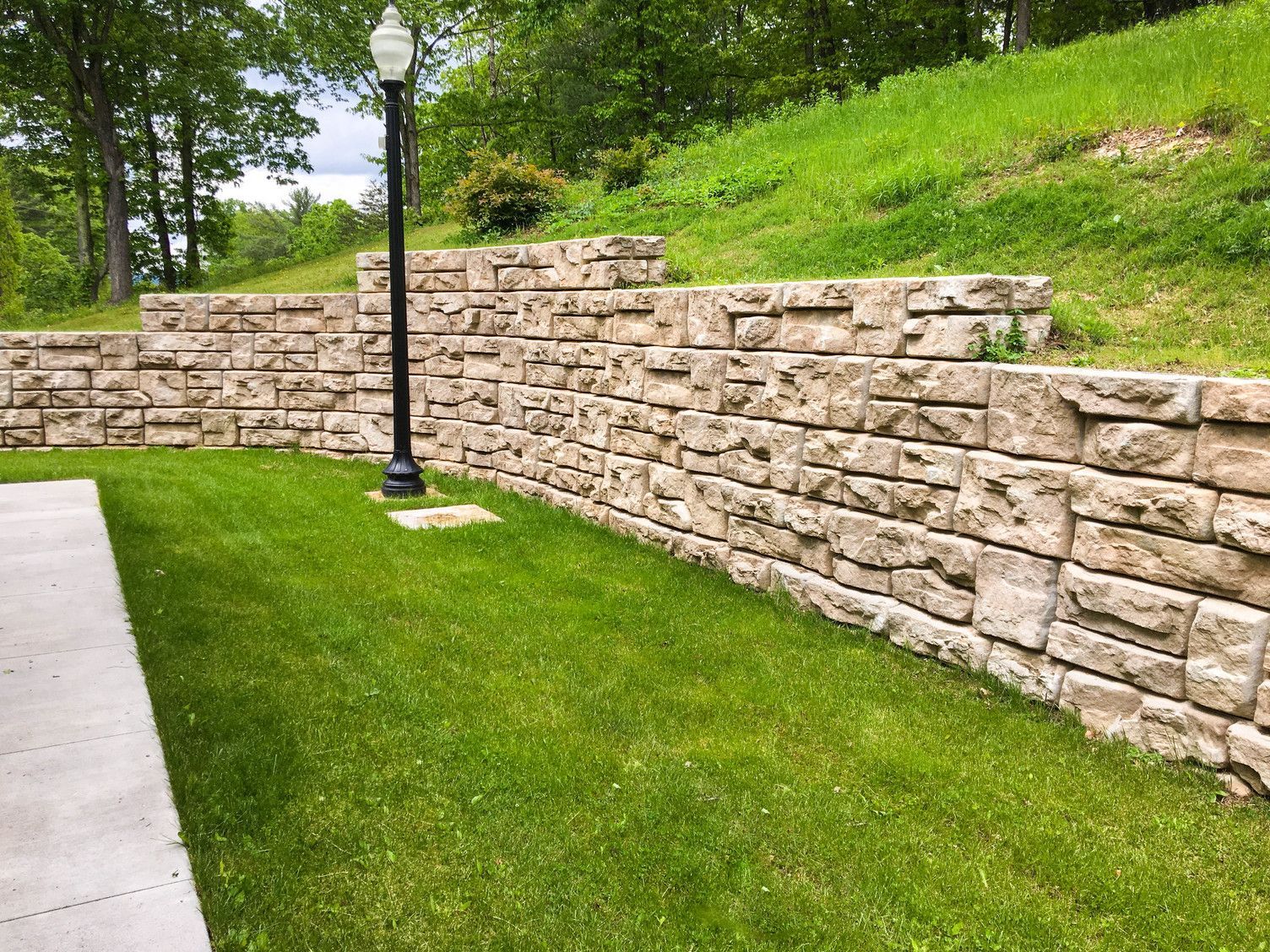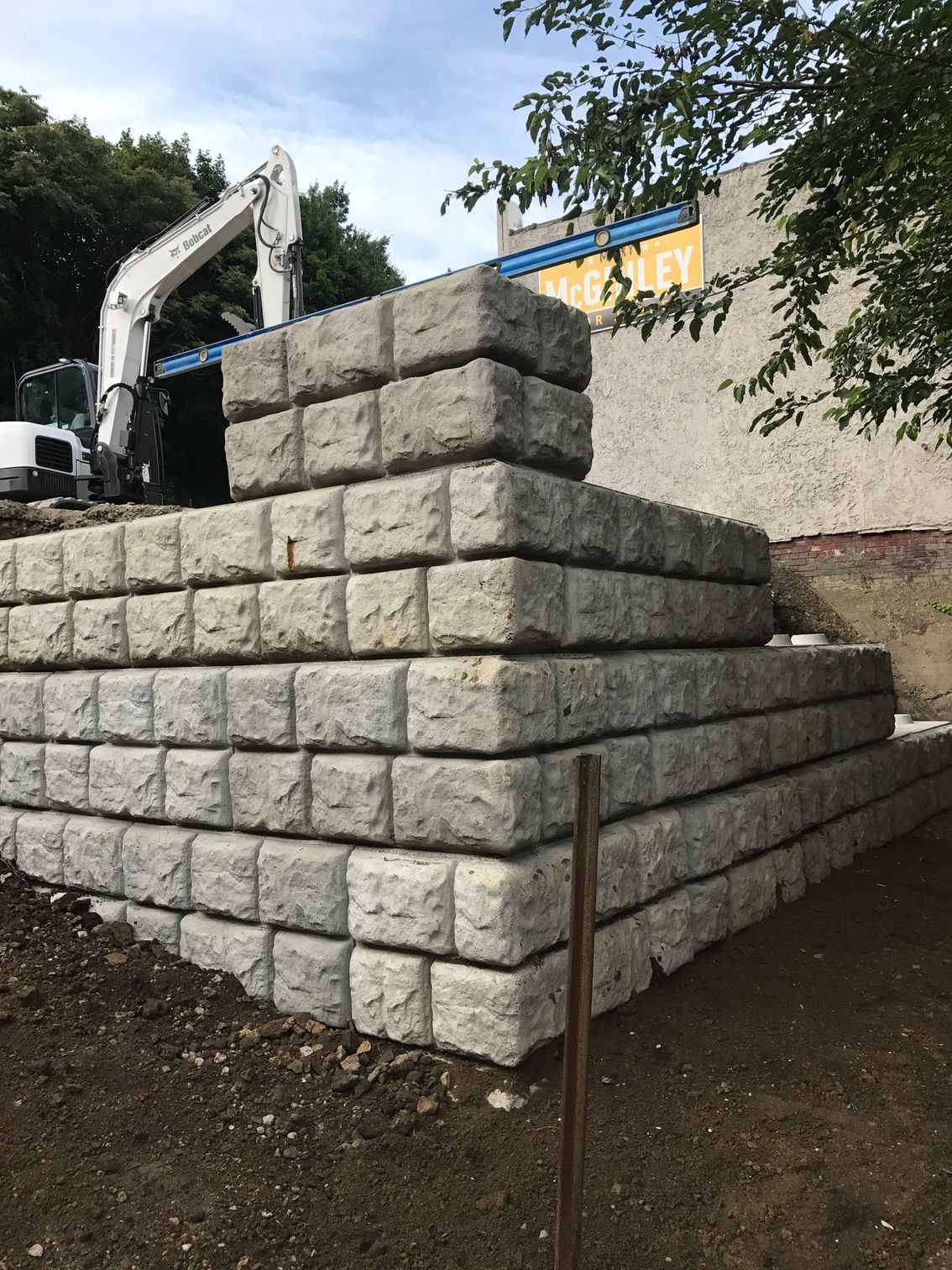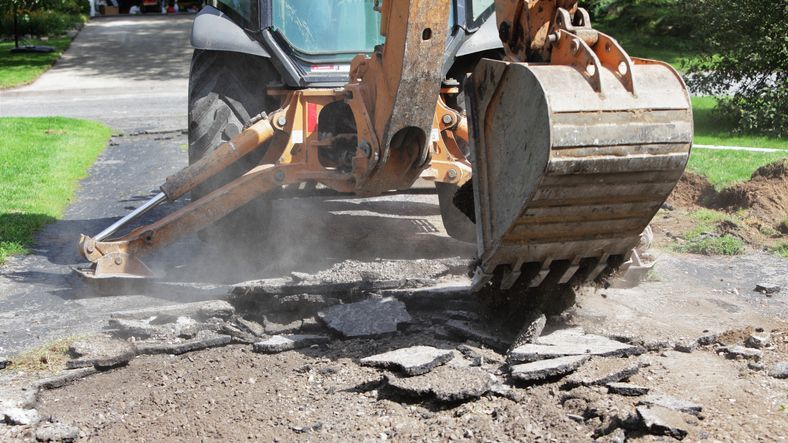Preparing for a Retaining Wall
Guide for Retaining Wall Preparation
If your yard contains dips, incline, or slopes, you may be considering having a retaining wall installed to prevent erosion, collapse or to help make your land more useable. Retaining walls can also be used to create tiered gardens or a raised seating area to enhance your outdoor space.
If you are considering having a retaining wall installed, there are a few ways you will need to prepare your property.
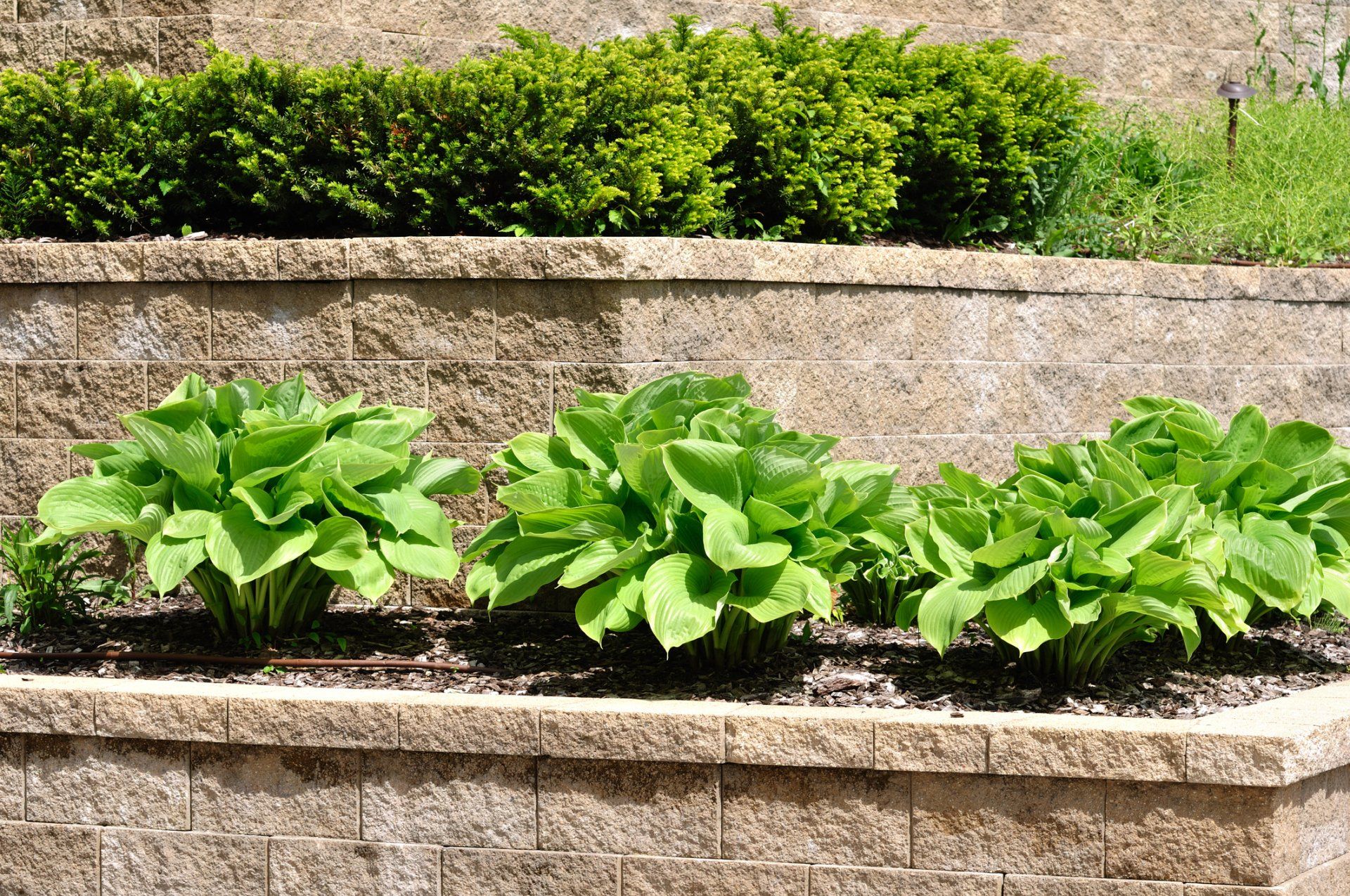 Retaining Wall Basics
Retaining Wall Basics
From sunken patios to walkout basements and endless hardscape features, retaining walls are a versatile tool that homeowners can use to create a unique and useable outdoor living space. A retaining wall is typically constructed from stone, bricks, or concrete.
If you plan to construct the retaining wall yourself, you can choose retaining wall blocks as your building material. These are available at most home improvement stores and cost anywhere between $1.25 and $4 per block. The price will depend on the size and texture of the block. Each block features locking flanges that securely attach each row of the blocks together.
For a small retaining wall , you can expect to spend about $5 to $8 per square foot if you plan to build it yourself. Larger retaining walls are not very DIY-friendly and are best left to the professionals for the best results. Pricing for retaining walls completed by a contractor will vary depending on if you opt for a stone or poured concrete wall and whether they need to pour a deep frost footing or perform tree root removal to pour the footing.
Steps to Take Prior to Retaining Wall Installation
Be sure to consult with your local building authority prior to installing a retaining. Make sure you obtain the correct building or zoning permit. Local ordinances and building codes vary across cities, so make sure to complete this step to remain in compliance. It is also important to call DigSafe (811) for local utility companies to come out and make sure there are no electrical, water, or gas lines in the way of where you plan to install your wall.
Retaining Wall Construction
Support, foundation, backfill, and drainage all need to be considered when installing a retaining wall.
Supporting the Retaining Wall
When a retaining wall is built, a contractor or landscaper will typically slope the wall lightly toward the earth they are containing, known as step-back construction. This helps to create a stronger structure that pushes back against the lateral pressure put forth by the soil. Vertical walls that don’t slope toward the contained earth and walls higher than three feet will require additional support from steel reinforcement, cantilevered design, buried footings, or tiebacks.
Retaining Wall Foundation
For shorter retaining walls, the foundation can consist of a trench filled with gravel, whereas taller walls will require buried structural footing as the foundation. This type of foundation is created when the contractor pours the concrete below the frost level to prevent the footings from shifting and moving if the moisture in the soil freezes.
Backfill for Your Retaining Wall
The space behind the retaining wall should be filled in with sand or gravel, avoid using dirt. The dirt gets wet and swells, causing unwanted pressure on the back of the retaining wall. Gravel and sand do not retain water, reducing the risk of damage and cracking.
Retaining Wall Drainage
In most cases, stackable retaining block walls with sand or gravel backfills will not usually have drainage problems. However, if you have a solid retaining wall, like a concrete basement wall, you will need to install and drainage system to drain the water away from the wall. In many cases, drainage tile will be installed to carry the groundwater to outlets where it can drain away and prevent cracks.
Professional Retaining Wall Installation
While some smaller retaining walls can be DIY-friendly, it is recommended that you use a professional retaining wall contractor to ensure you get the best results. At J Bird’s Landscaping , we are the retaining wall experts in South Hills.
Contact J Bird’s Landscaping to learn more about how we can install the right retaining wall for your property!
